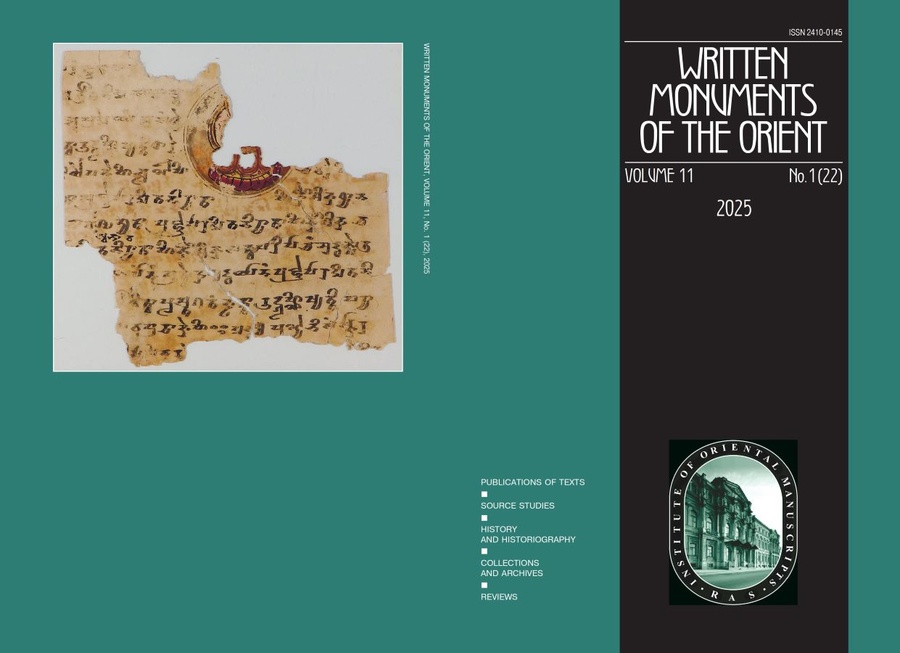LI Zhengfen 李正奮 Yongle Dadian or Investigations Concerning Yongle’s Compendium of Chinese Literature 永樂大典考. Translated by M.J. Hagerty and H.C. Ho. Berkeley, California. Edited and published by Hartmut Walravens
- 作者: Walravens H.1
-
隶属关系:
- Staatsbibliothek zu Berlin, Free University of Berlin
- 期: 卷 11, 编号 1 (2025)
- 页面: 109-128
- 栏目: Articles
- ##submission.datePublished##: 18.08.2025
- URL: https://journals.eco-vector.com/2410-0145/article/view/683477
- DOI: https://doi.org/10.55512/wmo683477
- ID: 683477
如何引用文章
全文:
详细
Li Zhengfen 李正奮[1]
Yongle Dadian or Investigations Concerning Yongle’s Compendium of Chinese Literature 永樂大典考
Translated by M.J. Hagerty and H.C. Ho. Berkeley, California
Edited and published by Hartmut Walravens
The Yongle dadian 永樂大典 is considered the largest and most comprehensive traditional encyclopedia of the world; it had 22937 chapters (juan 卷) and was clearly and beautifully written and drawn, in large size format. It was commissioned by the Emperor Chengzu 成祖 (reigned 1402–1424, with the reign title 永樂, perpetual happiness), the third emperor of the Ming dynasty, in 1403 and completed in 1408. For unknown reasons it was never printed and disappeared without leaving a trace, fortunately only after a copy had been made in 1557. Even this copy was ill-fated, it was gradually decimated by the Second Opium War, the Anglo-French invasion of Peking and the Boxer Rebellion so that today only around 400 volumes are known to exist. The Yongle dadian is not arranged by subjects like the much better known and still extant Tushu jicheng 圖書集成 with “only” 10.000 juan, of 1726/28 (date of printing), but by phonetical criteria, namely by the rhymes of the洪武正韻 Hongwu zhengyun rhyme dictionary (1375, named after the reign period of the founder of the dynasty). In contrast to European encyclopedias, like the French Encyclopédie, or the Encyclopaedia Britannica, it did not consist of explanatory texts written by scholars for that purpose, but consisted of quotations of the original texts, the sources, often giving the full text of a book (this type of reference is known in China as leishu 類書). The story of the Yongle dadian is well known in outline. When the Chinese Republic was established, the cultural heritage as preserved in the imperial palaces, was surveyed and evaluated. Efforts were also made to track down the remaining extant volumes of the Yongle dadian which were dispersed in a number of countries. Today many are available in electronic format on the Internet. Scholars mainly focused on studying the contents of the individual volumes which presented in many cases quotes from sources no longer extant. The investigation of the compilation of this huge “encyclopedia” was left to the librarians, and there were several instructive articles by book experts like Yuan Tongli 袁同禮 (1895–1965; director of the Peking Library, later National Library) and Li Zhengfen 李正奮. The latter article is given here in English translation by Michael J. Hagerty (1876–1951),[2] of the US Department of Agriculture, and his lettré H.C. Ho.[3] They worked on the campus of the University of California, Berkeley, under the supervision of the botanist Walter Tennyson Swingle (1871–1951),[4] and Hagerty was mainly kept busy with translating Chinese source material on cultivated plants, like citrus and lychee. Swingle worked in close connection with the Library of Congress and for a number of years supplied the descriptions of new acquisitions in East Asian languages.[5] Thus, library matters were also of importance for his small research unit. The present paper (preserved among the Michael Joseph Hagerty papers of the Bancroft Library, University of Berkeley, California, call. no. BANC MSS 79/113 zLOCAL) was revised for publication, and the transcription was changed to the pinyin system. While the paper is now a historical document, it still gives a reliable picture of the compilation and development of Yongle dadian, not easily available otherwise in Western languages.
[1] For the original Chinese publication see Li 1926.
[2] On him see the introduction to Hagerty 2024.
[3] No information on H.C. Ho was found.
[4] Walter Tennyson Swingle, 1871–1952. On his life and works see Venning 1977.
[5] Walravens 2021.
作者简介
Hartmut Walravens
Staatsbibliothek zu Berlin, Free University of Berlin
编辑信件的主要联系方式.
Email: hwalravens@gmx.net
Dr. habil.
德国, Berlin参考
- LI Zhengfen 1926: “Yongle dadian kao”. Library Science Quarterly 圖書館學季刊 1(2): 215–223.
- GILES, Herbert Allen 1912: Chinese-English dictionary. 2nd ed. Shanghai: Kelly & Walsh.
- HAGERTY, Michael J. & Walravens, Hartmut 2024: The Lizhi 荔枝 (Lychee) — The Peer-less Fruit. The world’s first monograph on any fruit (Lizhi pu, 1059) and its followers. Translated from the Chinese, annotated and edited by Michael J. Hagerty & Hartmut Walravens. Wiesbaden: Harrassowitz. 240 pp. (Asien- und Afrika-Studien der Humboldt-Universität 64).
- SUN Zhuang 孫壯 1929: “Yongle dadian kao 永樂大典考”. Bulletin of the Metropolitan Libary = Beiping Beihai tushuguan yuekan 北平北海圖書館月刊 2(3/4): 191–213.
- Venning, Frank 1977: „Walter Tennyson Swingle, 1871–1952“. The Carrell: Journal of the Friends of the University of Miami 18: 1–32.
- Walravens, Hartmut 2021: “Namen- und Titelregister zu den Jahresberichten über ostasiatische Neuerwerbungen der Library of Congress, Washington, D.C. 1898–1941”. Monumenta Serica 69: 201–241, 549–590.
补充文件







